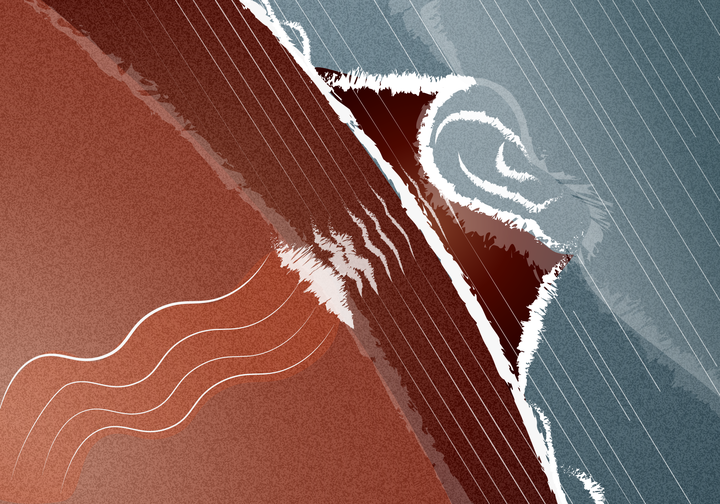Fluid migrations and volcanic earthquakes from depolarized ambient noise
 For the first time ever, researchers used seismic noise to observe the movement of volcanic material at depth. The figure represents the disturbance volcanic materials create on ambient noise, recorded by the ‘ear’ sketched in the volcanic gases.
For the first time ever, researchers used seismic noise to observe the movement of volcanic material at depth. The figure represents the disturbance volcanic materials create on ambient noise, recorded by the ‘ear’ sketched in the volcanic gases.
Abstract
Ambient noise polarizes inside fault zones, yet the spatial and temporal resolution of polarized noise on gas-bearing fluids migrating through stressed volcanic systems is unknown. Here we show that high polarization marks a transfer structure connecting the deforming centre of the caldera to open hydrothermal vents and extensional caldera-bounding faults during periods of low seismic release at Campi Flegrei caldera (Southern Italy). Fluids pressurize the Campi Flegrei hydrothermal system, migrate, and increase stress before earthquakes. The loss of polarization (depolarization) of the transfer and extensional structures maps pressurized fluids, detecting fluid migrations after seismic sequences. After recent intense seismicity (December 2019-April 2020), the transfer structure appears sealed while fluids stored in the east caldera have moved further east. Our findings show that depolarized noise has the potential to monitor fluid migrations and earthquakes at stressed volcanoes quasi-instantaneously and with minimum processing.